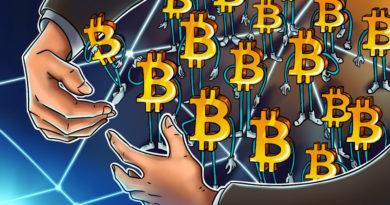Why real estate investors are going crazy over virtual lands?
Virtual lands are all the rage, but why are real estate investors pouring literal millions into metaverse properties? Let’s break it down.
Real estate in the metaverse is booming, but will it last?
It’s no secret that investors are spending millions on metaverse real estate. But one must wonder if these investments are based on a fad.
While there has always been speculative interest in metaverse properties, since projects like Decentraland launched, interest shot up upon Facebook’s name change to Meta. The social media entity has certainly faced some controversy, but there’s no denying its potential easy access to metaverse content with its consumer-priced Oculus VR headset.
In November 2021, the Metaverse Group, an NFT-based real estate company, invested $2.43 million to expand into the digital fashion industry. Early 2022 saw Microsoft invest $68.7 billion into Activision Blizzard, one of the largest gaming enterprises in the world, in a push for its metaverse over the coming years. Even Apple is getting involved, with CEO Tim Cook revealing that the trillion-dollar business sees “a lot of potential in this space and are investing accordingly.”
Each of these groups is sure to explore virtual lands alongside their other metaverse plays. It’s impossible to predict exactly how everything will play out, and big businesses have been wrong before, but there’s no denying just how much money is being pushed into the metaverse vision.
What are Metaverse real estate agents?
Metaverse real estate agencies claim to facilitate virtual land ownership despite the investor’s lack of knowledge in the space.
Some virtual real estate investors utilize metaverse real estate agents to find a property that fits their financial needs. After all, not everyone investing in this world is interested in actually living on and developing their properties in the metaverse. Some simply want to invest in land and flip it for a profit later on.
Metaverse agents and agencies claim to offer virtual real estate exposure without the potentially overwhelming aspects of crypto, such as managing various wallets and blockchain networks. These virtual real estate agencies facilitate the buying and selling of virtual real estate, development of said land, consultations and more. It’s even possible to rent virtual land — an ideal concept for event hosting purposes, among other benefits.
While some investors allege a metaverse real estate agency assisted them in finding and managing valuable virtual land, it’s worth noting that this space is still a speculative one. Many of these agencies operate in a legal gray area, meaning there’s little you can do if the agency fails to help you or wastes your money.
How to buy virtual real estate in the metaverse?
Like the real world, investing in virtual real estate requires lots of research and speculation.
Learning how to buy virtual real estate in the metaverse is pretty simple. The process of buying virtual real estate starts by examining the various metaverse projects out there and deciding which is best for you.
Most metaverse projects exist on the Ethereum blockchain, so it’s often best to acquire an Ethereum-powered wallet, such as MetaMask, to start. These projects, including The Sandbox and Decentraland, represent real estate and similar offerings with NFTs, and users can purchase one via a project’s NFT marketplace.
Much like in the real world, users can make an offer to buy a virtual property on these NFT marketplaces. Whichever offer gets accepted is up to the seller, of course. Still, once an offer is accepted, the NFT will automatically transfer from the seller’s wallet to the buyer via a smart contract, representing a shift in digital ownership.
While examining land in a project like Decentraland, you can use its in-game map to realize the value of each area. Some more valuable Decentraland properties are next to plazas and similarly populated regions, while plots away from these spaces are generally less valuable.
How does the value of virtual land increase?
The value proposition of virtual land works similarly to the real world. High-value properties are often near shops and activities, in which people will pay higher rent to live by.
Of course, the value of virtual land only increases if areas develop and people get involved in the metaverse. This prospect is why there are many skeptics of such an investment. The millions of dollars worth of investments into virtual land is all a risk, but it’s not an unfounded one.
After all, celebrities and stars are buying virtual land for all sorts of reasons. Some celebrities, like Snoop Dogg, are buying land to get ahead of the trend or because they think it’s fun. Others, such as the Winklevoss Twins, invest in land for educational purposes — to build exhibits that teach others about crypto and the metaverse as a whole.
From there, fans have the opportunity to buy metaverse properties next to their favorite stars and will pay top-dollar to do so. Those interested in virtual real estate investing are betting on the possibility of their land becoming more valuable over time, hence their bullishness toward virtual land as a whole. If you’re wondering why some believe metaverse is the biggest investment opportunity, appreciation in land value is one of them.
In fact, in some realms such as PolkaCity, property owners are earning passive income through annual interest rates. Unfortunately, to some, passive income isn’t a feature in all metaverse projects, and it’s always a risk to invest in an asset expecting profits later on. This variety of income methods is all the more reason to do in-depth research before investing.
Why investors are spending millions on buying virtual lands?
Investors are betting on a digital future where everyone will own a virtual plot of land.
Investors spend millions on virtual lands because they believe the future is digital. These companies expect people to flock to virtual properties by the millions and invest in virtual land for sale while expecting a potential return on investment. This method is very similar to real estate investments in the real world, where investors buy up land in developing areas only to sell it back later when the value has increased.
Furthermore, according to a report by crypto asset manager Grayscale, digital asset inventories are likely to reach $1 trillion shortly. Therefore, investors want to hoard pieces of virtual land similar to stocks and traditional real estate.
What are virtual lands in the metaverse?
Virtual lands are envisioned as spaces where anyone can go and hang out with their friends via a monitor or through their virtual reality headset.
Virtual lands are literally digital plots of land existing in a 3D online space — one in which users can log into and experience an immersive world through their online avatars via a monitor or VR headset. Virtual lands have various pros and cons depending on a user’s metaverse of choice. For instance, some metaverse properties might exist on ideal grassy terrain with a view, while others might exist next to a virtual shopping mall where players tend to gather.
Eventually, enthusiasts expect metaverse real estate properties to support virtual houses, where users can build whatever they’d like, similar to the game The Sims. With metaverse properties, users are expected to decorate their homes to create their ultimate hang out, inviting over friends from anywhere in the world.
Event brands also utilize virtual land to organize house concerts, or product release events, which they claim are especially vital during the COVID-19 pandemic. A virtual concert has no population limit and enables people to gather and enjoy their favorite artists without worrying about space or safety.




